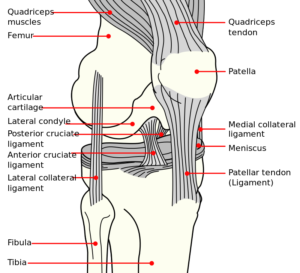 Our bones hold us up, our muscles move us and the nerves tell the muscles to move the bones. Our bones are held together by ligaments and the bones are moved by muscles. Tendons connect muscles to bones.
Our bones hold us up, our muscles move us and the nerves tell the muscles to move the bones. Our bones are held together by ligaments and the bones are moved by muscles. Tendons connect muscles to bones.
Ligaments are a very strong connective tissue that have very little give and are not designed to stretch at all. Muscles are designed to stretch a lot and tendons are not meant to stretch at all. Unfortunately many of us live in a bodily environment where ligaments tend to be overstretched or lax in tone.
Poor posture wrecks havoc on the ligaments of the body, overstretching them in many places of the body where we depend on postural support from the ligaments and muscles rather than the bones. A natural reason for having loose ligaments would be a pregnant woman whose ligaments loosen in preparation for child birth.
When we exercise we don’t want to stretch ligaments or even use them in a sense. They literally want to hold us together and we don’t want to compromise that by stretching them. We want to control all of our movements through our muscles freeing the ligaments to hold us together. Unfortunately poor muscle tone or muscle imbalance often leads to poor alignment or instability in a joint— and our ligaments live in response to the relationships created by opposite muscle groups.
An injury to a ligament is very different than an injury to a muscle. When you pull a muscle you can work through it if you so choose. It won’t heal faster but you can warm the muscle up and stretch it without doing more damage. The opposite is the case for a ligament. When you exercise with an injured ligament, it warms up and feels good but that good feeling is not healing. An injured ligament needs to rest in order to heal in a way a muscle does not.
It is very important to correctly diagnose your injuries to create the proper protocol for healing.
***
